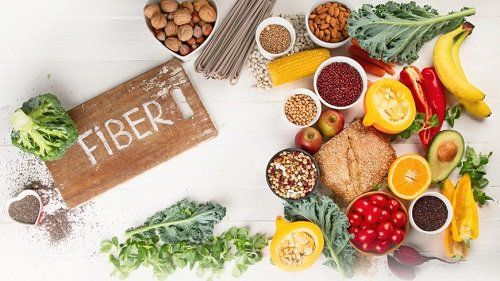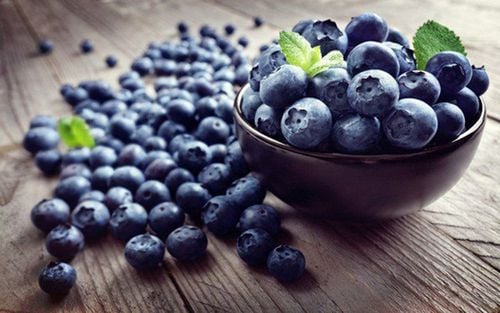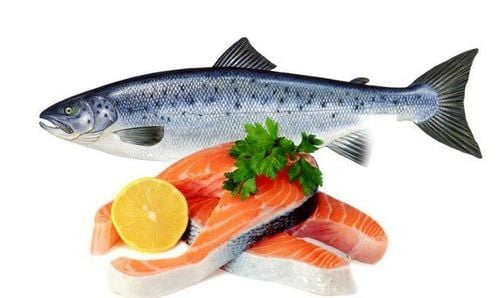This is an automatically translated article.
Antioxidants are compounds made in your body and found in many foods. They help protect cells in the body from damage caused by potentially harmful molecules called free radicals.1. An overview of antioxidants When free radicals accumulate, they can cause a state known as oxidative stress. This can damage DNA and other important structures in the body's cells. In addition, chronic oxidative stress can increase the risk of chronic diseases such as heart disease, type 2 diabetes, and cancer.
However, to combat oxidative stress and reduce your risk of these diseases, you should eat a diet rich in antioxidants which can help your body increase the amount of antioxidants in your blood. .
To measure the antioxidant content of foods, scientists use several tests. The FRAP (plasma reduction capacity) analysis is considered to be one of the best tests. This test helps measure the antioxidant content of foods by how well they can neutralize a particular free radical.
The more antioxidants a food contains, the higher the FRAP value.
Here are the top healthy foods high in antioxidants.
2. Antioxidant-rich foods 2.1 Dark Chocolate For those who like chocolate, this is great because dark chocolate is very nutritious. Dark chocolate contains more cocoa than regular chocolate, as well as more minerals and antioxidants.
Based on FRAP analysis, there are up to 15 mmol of antioxidants in every 3.5 ounces (100 grams) of dark chocolate. Compared to blueberries and raspberries, this number is even higher, containing up to 9.2 and 2.3 mmol of antioxidants in the same serving, respectively.
Plus, there are a number of other health benefits associated with the antioxidants found in cocoa and dark chocolate, like less inflammation and reduced heart disease risk factors.
A review was done based on the results of 10 studies that looked at the link between cocoa intake and blood pressure in both healthy people and those with high blood pressure readings. Consuming cocoa-rich products such as dark chocolate reduced systolic blood pressure (the upper value) by an average of 4.5 mmHg and diastolic blood pressure (the lower value) by an average of 2.5 mmHg. Some other studies also show that consuming dark chocolate helps reduce the risk of heart disease by raising blood antioxidant levels, increasing levels of "good" HDL cholesterol, and preventing "bad" LDL cholesterol. Oxidized.
Because it promotes inflammation in blood vessels, LDL cholesterol oxidizes harmfully, which can lead to an increased risk of heart disease.

Sôcôla đen chứa nhiều khoáng chất và chất chống oxy tốt cho hệ tim mạch
2.2 Pecans Pecans are a nut native to Mexico and South America. They're a great source of healthy fats and minerals, plus they're packed with antioxidants.
Based on FRAP analysis, each 3.5 ounces (100 grams) of pecans contains up to 10.6 mmol of antioxidants.
In addition, consuming pecans can help your body raise the level of antioxidants in the blood. For example, one study found that you can significantly increase your blood antioxidant levels if you consume 20% of your daily calories from pecans.
In another study, people who consumed pecans had a 26–33% reduction in oxidized blood LDL levels within two to eight hours. One of the major risk factors for heart disease is high levels of oxidized LDL cholesterol in the blood.
Although pecans are a great source of healthy fats, they are also high in calories. Therefore, it is important to eat pecans in moderation to avoid consuming too many calories.
2.3 Blueberries Blueberries are packed with nutrients and antioxidants, yet they're low in calories. According to a FRAP analysis, every 3.5 ounces (100 grams) of blueberries contains up to 9.2 mmol of antioxidants.
Some studies even show that, of all commonly consumed fruits and vegetables, blueberries contain the highest amount of antioxidants
Also, based on the results obtained Studies done from test tube and animal studies have shown that the decline in brain function that tends to occur with age can be delayed by the antioxidants in blueberries.
According to some experts, the antioxidants in blueberries are responsible for this effect. These substances are thought to do this by neutralizing harmful free radicals, reducing inflammation, and altering the expression of certain genes. In addition, blueberries contain a special antioxidant that has been shown to reduce risk factors for heart disease, LDL cholesterol levels and blood pressure, called anthocyanins.
2.4 Strawberries A lot of people love strawberries. They are also a rich source of vitamin C and antioxidants.
Based on FRAP analysis, every 3.5 ounces (100 grams) of strawberries provides up to 5.4 mmol of antioxidants.
Furthermore, there is a type of antioxidant called anthocyanins present in strawberries, which gives them their red color. Strawberries will have a brighter red color if they are high in anthocyanins. Research has shown that, by lowering levels of "bad" LDL cholesterol and increasing "good" HDL cholesterol, anthocyanins can help reduce the risk of heart disease.
A review done of 10 studies found that anthocyanin supplementation significantly reduced LDL cholesterol in people with heart disease or high LDL levels.
2.5 Artichoke Artichoke is an uncommon vegetable in the North American diet. This is a delicious and quite nutritious vegetable.
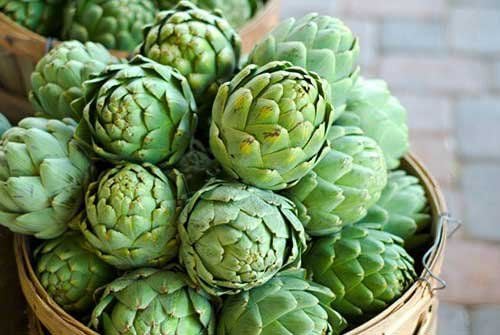
Atiso là loại rau ngon và khá bổ dưỡng giàu chất chống oxy hóa
But they have a long history - people in ancient times used their leaves as a remedy to treat liver ailments like jaundice. Artichokes are also known to be a rich source of fiber, minerals and antioxidants.
Based on FRAP analysis, each 3.5 ounces (100 grams) of artichokes contains up to 4.7 mmol of antioxidants. In particular, artichoke is a food rich in antioxidants, this substance is also known as chlorogenic acid. Studies show that the antioxidant and anti-inflammatory benefits of chlorogenic acid may help reduce the risk of certain cancers, type 2 diabetes, and heart disease.
Depending on how the artichoke is prepared, the antioxidant content of the artichoke can vary. Boiling artichokes can increase antioxidant content by 8 times and steaming can increase this content by 15 times. On the other hand, their antioxidant content is reduced if you fry artichokes.
2.6 Goji Berries Goji berries are a dried fruit of two related plants, Lycium barbarum and Lycium chinense. Goji berries have been considered part of Traditional Chinese Medicine for over 2,000 years.
Because Goji berries are rich in vitamins, minerals and antioxidants, they are often marketed as a superfood. Based on FRAP analysis, every 3.5 ounces (100 grams) of goji berries contains 4.3 mmol of antioxidants. In addition, goji berries contain unique antioxidants called polysaccharides Lycium barbarum. Besides being beneficial in reducing the risk of heart disease and cancer, these substances also aid in anti-aging skin. Moreover, in raising the level of antioxidants in the blood, goji berries also bring certain effects.
In several studies conducted with healthy elderly people consuming a milk-based goji berry drink every day for 90 days. Their blood antioxidant levels increased by 57% when tested at the end of the study.
Goji berries are very nutritious but also quite expensive when eaten regularly. Furthermore, currently only a handful of studies on the effects of goji berries in humans have been performed. While these support our health benefits, more human-based research is still needed.
2.7 Raspberries Raspberries are a fruit commonly used in desserts. They have a sour, soft taste. They are an excellent food source rich in fiber, vitamin C, manganese, and antioxidants.
Based on FRAP analysis, up to 4 mmol of antioxidants per 3.5 ounces (100 grams) of raspberries. According to experts, raspberries contain antioxidants and other components that help reduce the risk of cancer and heart disease.
One test-tube study found that 90% of stomach, colon and breast cancer cells in a sample were killed by antioxidants and other components found in raspberries.
A review based on the results of 5 studies concludes that the anti-inflammatory and antioxidant properties of black raspberries can slow and block the effects of many types of cancer.
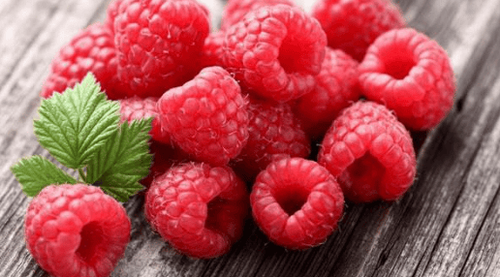
Quả mâm xôi giàu chất xơ, vitamin C, mangan và chất chống oxy hóa
However, most of the evidence for raspberries' health benefits comes from test-tube studies. Before making further recommendations, more human studies are needed.
2.8 Kale Kale is a cruciferous vegetable and is grown from the species Brassica oleracea. Other vegetables include broccoli and cauliflower. Kale is considered the most nutritious green vegetable on the planet and is rich in vitamins A, K and C. It is also an antioxidant-rich food, each 3.5 ounces (100 grams) provides up to 2, 7 mmol.
However, per 100g of red kale varieties like red kale and red Russian kale can contain almost double - up to 4.1 mmol of antioxidants . The red varieties of kale contain more anthocyanin antioxidants as well as several other antioxidants that give them their vibrant color.
Kale is also an excellent plant-based source of calcium, an important mineral that helps maintain bone health and plays a role in other cellular functions.
2.9 Red Cabbage Red cabbage is a very nutritious food. Many people call it purple cabbage, which is rich in vitamins C, K and A, and has a high antioxidant content.
According to a FRAP analysis, every 3.5 ounces (100 grams) of red cabbage provides up to 2.2 mmol of antioxidants. The amount of this antioxidant is 4 times higher than that of regular cooked cabbage. This is because red cabbage contains anthocyanins, a group of antioxidants that give red cabbage its color. Anthocyanins can be found in strawberries and raspberries.
These anthocyanins have been linked to a number of health benefits, helping to reduce inflammation, protect against heart disease, and reduce the risk of certain cancers.
Besides, red cabbage is also a rich source of vitamin C which acts as an antioxidant in the body, helping to strengthen the immune system and keep the skin firm. Interestingly, red cabbage's antioxidant levels can also be affected by how it's prepared.
Boiling and sautéing red cabbage can boost the antioxidants found in this food, while steaming red cabbage can reduce the antioxidant content by almost 35%.
2.10 Beans Beans are a diverse group of legumes and are very healthy. Beans are a high-fiber food, which can help you have regular bowel movements.
Beans are also considered a food rich in antioxidants. A FRAP analysis found that chickpeas contain up to 2 mmol of antioxidants per 3.5 ounces (100 grams).
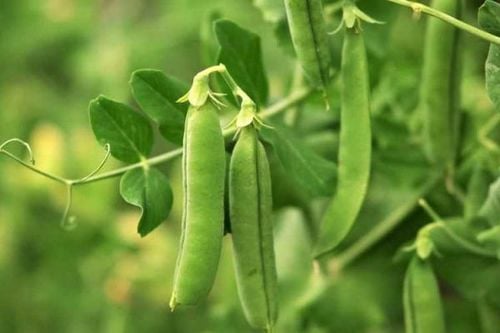
Đậu là thực phẩm giàu chất xơ, chứa nhiều chất chống oxy hóa
In addition, a particular antioxidant called kaempferol is present in some beans, such as pinto beans. This antioxidant offers certain health benefits, such as reducing chronic inflammation and stopping cancer growth.
Several animal studies have found that the growth of cancer in the breast, bladder, kidney and lung can be prevented by kaempferol. However, because most of the studies supporting the benefits of kaempferol have been in animals or test tubes, more human-based studies are needed.
2.11 Beets
Beets, also known as beets, are the roots of a vegetable scientifically known as Beta vulgaris. They are a great source of fiber, potassium, iron, folate and antioxidants.
Based on FRAP analysis, every 3.5 ounces (100 grams) of beets contains up to 1.7 mmol of antioxidants.
Beets are foods that contain a group of antioxidants called betalains. These substances give beets their red color and have been linked to health benefits. For example, some test-tube studies have linked betalain to a reduced risk of cancer in the colon and gastrointestinal tract. In addition, other compounds that can help reduce inflammation are also found in beets. For example, one study found that taking betalain capsules made with beetroot extract significantly reduced osteoarthritis pain and inflammation.
2.12 Spinach Spinach is one of the vegetables rich in nutritional value. There are many vitamins, minerals and antioxidants and extremely few calories in spinach. Based on FRAP analysis, every 3.5 ounces (100 grams) of spinach provides up to 0.9 mmol of antioxidants.
Spinach is also a rich source of lutein and zeaxanthin. Two antioxidants can help protect your eyes from the damage of UV rays as well as other harmful wavelengths of light. These antioxidants help fight the damage that free radicals can cause over time to the eyes.
2.13 Purple, red, and green grapes Grapes, especially dark colored ones, are packed with phytochemicals, antioxidants that may help protect against cancer and heart disease. Two of those phytochemicals, anthocyanins and proanthocyanidins, are especially good for your immune system. Grapes are also rich in vitamin c and selenium.
2.14 Tea With a sip of tea, you'll get two potent phytochemicals - anthocyanin and pro anthocyanin. Both are antioxidants that help fight inflammation. Add to that a healthy dose of catechins, antioxidants thought to prevent cell damage that can lead to cancer. In particular, green tea contains many other protective phytochemicals. In particular, green tea contains a lot of Catechin epigallocatechin gallate (EGCG). This is a particularly potent antioxidant.

Trà chứa chất chống oxy hóa giúp ngăn chặn tổn thương tế bào có thể dẫn đến ung thư
If you are sensitive to small amounts of caffeine, look for other alternatives.
Antioxidants can be made naturally by the body. You can also get these from food. Antioxidants protect your body from potentially harmful molecules called free radicals, which can build up and promote oxidative stress. Oxidative deficiency increases the risk of heart disease, cancer, type 2 diabetes and many other chronic diseases.
Adopting a diet rich in antioxidants can help neutralize free radicals and reduce the risk of these chronic diseases.
By eating a variety of foods rich in antioxidants, you can boost your blood antioxidant levels and provide many other health benefits.
Please dial HOTLINE for more information or register for an appointment HERE. Download MyVinmec app to make appointments faster and to manage your bookings easily.
Reference source: webmd.com; healthline.com




